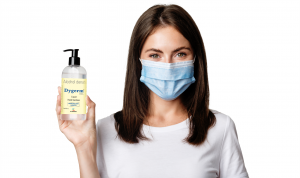Unexpected injuries like cuts, burns, or sudden illness can happen anytime. Hence having a well-equipped first aid kit at home is essential. Whether you live alone, or with children, or elderly family members, it’s a vital part of home safety.
Key Items to Have in First Aid Kit:
Elastic Bandages: Elastic bandages provide support for strained muscles or sprained joints, like ankles. They can also help keep dressings secure, especially for active children.
Gauze Pads & Adhesive Tape: Keep sterile nonstick gauze pads of different sizes to cover wounds and control bleeding. Medical adhesive tape is used to secure the gauze or dressing in place.
Scissors & Tweezers: Scissors are needed to cut gauze, bandages and sealed packages. Tweezers are essential for removing insect stings, splinters or glass pieces.
Alcohol Wipes: Ideal for sterilizing tools like scissors and tweezers before and after use. Avoid using them directly on open wounds as it can cause irritation.
Antibacterial Ointment / Creams / Powders : Applying antibacterial ointment or cream on cleaned wounds can help prevent infection. However, thorough cleaning of the wound is the most important step. Antibacterial powders can also be used on cleaned wounds.
Gloves: Have at least two pairs of gloves to wear while treating wounds to protect both the patient and caregivers from infections. Choose non-latex gloves to avoid allergic reactions.
Thermometer: A digital thermometer quickly detects body temperature in case of fever. Avoid glass thermometers to prevent breakage; check batteries regularly if it’s electronic.
Instant Heat and Cold Packs: Instant packs provide quick relief for bruises, sprains, or headaches when ice or heat isn’t available. Keep both cold and hot packs in your kit.
Prescription Medication: Maintain a 7-day supply of essential prescription medications along with a list of the medications and their dosages for quick reference during emergencies.
Antiseptic Solution: Solutions like povidone-iodine or hydrogen peroxide helps to clean wounds and prevent infection. Always follow up with proper drying and dressing.
Cotton Balls & Swabs: Use cotton balls and swabs to apply ointments or antiseptics gently to clean small wounds. To avoid contamination, keep them sealed after every use.
Hand Sanitizer & Face Masks: Sanitize your hands before providing first aid to prevent infection. Face masks help prevent spreading germs when treating someone with cold, cough etc. Keep them handy during cold and flu season.
Eye Wash or Saline Solution: Use saline or eye wash to gently rinse out dust, debris, or irritants from the eyes. This provides quick relief and prevents further irritation.
Emergency Contact Information: Write down and store phone numbers for your doctor, ambulance, poison control, and nearby hospitals inside your first aid kit for quick access.
Over-the-Counter Medications: Keep basic medicines like pain relievers (paracetamol, ibuprofen, aspirin) for fever or pain, antihistamines for allergies, anti-diarrheal medication for stomach upset, antacids for indigestion, cough syrup or lozenges for throat discomfort, and soothing gels like aloe vera for burns or sunburns.
CPR Face Shield (Optional): Recommended if you are trained in CPR, this creates a protective barrier while giving rescue breaths.
Flashlight & Batteries: Essential for dealing with emergencies during power outages or nighttime. Ensure to store fresh batteries and inspect it regularly.

Storing Your First Aid Kit
Pick a durable container like a plastic box with organized compartments. Label it clearly, keep it in an easily accessible place and make sure that your family members know where to find the kit in an emergency.
Maintenance Tips
Periodically replace any used or expired items in your kit. Make sure everything is dry, clean, and ready to use right away. Teach your family members how to use the kit’s contents correctly.

